Regional Roundup: Industry Trends of the West Region
Today, people move fluidly from experience to experience resulting in everchanging environments that are shaped by the lifestyles and needs of people and communities everywhere. From coast to coast, our teammates are at the forefront of transforming environments and are on the pulse of the trends that define them. In our latest Regional Roundup series, we’ll be connecting you with NELSON teammates from across the country, both new faces and long-time leadership, to explore and highlight regional trends and shifting consumer expectations, across the industries we serve.
This week, we’re introducing you to our West region teammates:
- Kathy Craft, Industrial Practice Leader | NELSON Seattle
- Mark Levine, Managing Director | NELSON Los Angeles
- Tom Bowen, Market Leader | NELSON Seattle
Industrial
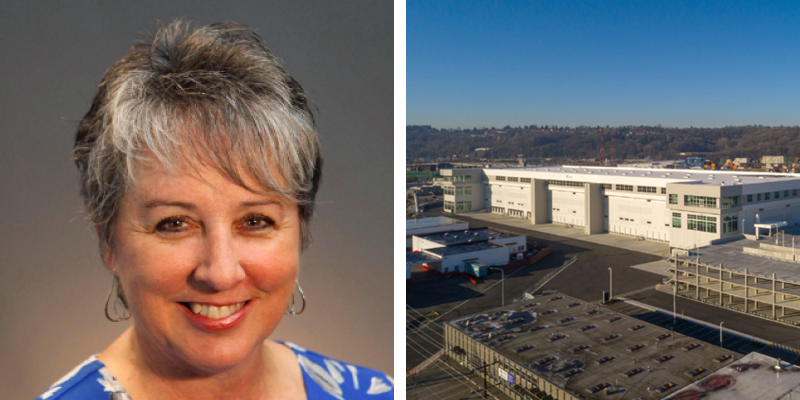
TRENDS:
Today, e-commerce is more than 30% of all retail shopping and we expect that to continue to drive demand for all types of industrial space. Specifically, we are seeing an increase in demand for freezer/cooler space, vertical indoor controlled growing environments, and an increased relationship between technology and the built environment. As large companies publish goals and implement strategies for net-zero carbon we will continue to see more electrification of fleet vehicles, renewable energy implementations, and the use of technology to minimize process and delivery inefficiencies.
CHALLENGES:
As the demand for industrial land, whether for new development or repositioning of existing, continues to increase we see vertical industrial development to make more sense. We are working with structural engineers and general contractors to come up with a way to reduce construction costs while increasing the efficiency of cube space functionality in a vertical environment. 50% of the cost of e-commerce is transportation. I think we will see more creative ways to get the product to the consumer in both locations of facilities and delivery methods.
WHAT’S NEW FROM NELSON:
Our latest project within Prologis Georgetown Crossroads—a 3-story industrial development—is 100% leased to two big e-commerce players. Each is providing very different sized products for last-mile delivery to the consumer. The proximity to both major transportation routes, I-5 & Hwy 99, as well as proximity to a high density of customers is key in addition to the flexibility this facility offers.
Kathy Craft’s experience includes 30 years of award-winning architectural work with local, national, and international developers of all sizes. The driving force behind NELSON’s industrial practice, her portfolio includes a pioneering industrial project for Prologis, which was the first multistory warehouse of its kind in the United States at Georgetown Crossroads in Seattle.
Mixed-Use
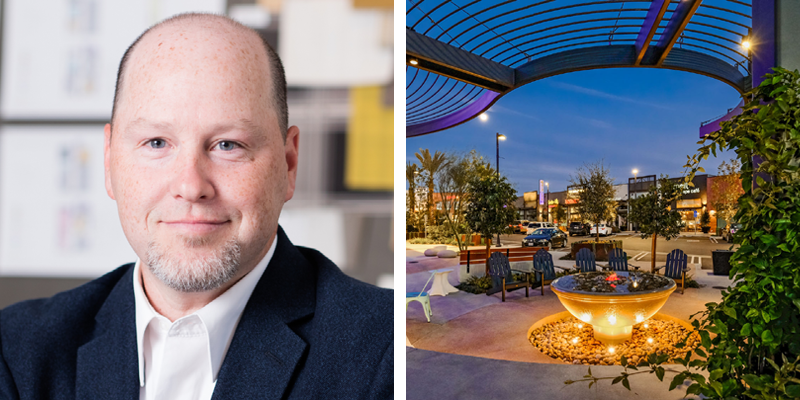
TRENDS:
Across every sector, our clients are challenging the traditional vision of development in the way they approach adding value to a property. For mixed-use properties, the expectation of what a town center or mall, or even apartment building offers can be vastly different now. From outdoor spaces to enhanced convenience and connectivity, this brings exciting new possibilities to communities that are starving to be included.
CHALLENGES:
It may be incremental, but I see city jurisdictions working harder to open up opportunities and work with developers who bring an aspirational vision to their projects. The last 18 months have been challenging in a lot of ways for our communities across the region and country. I see a groundswell to the challenge of how we move forward. Not just to be different, but to be better.
WHAT’S NEW FROM NELSON:
Our team is in the first stages of developing a mixed-use master plan for a B-level mall property. Currently, the location doesn’t garner that much regional attention, but when we are done I think it will serve as an incredible example of responding in a very personal way to the community’s needs and aspirations. As we continue to garner more of these types of projects, the challenge is to stay at the cutting edge of transforming communities into better, more desirable, and resourceful places for those in and around them.
Also, we are working with a local Los Angeles developer who owns several small retail buildings in a highly regarded retail district. We are studying conversions to small mixed-use retail/workplace designs that will be more attractive in a post-COVID market.
For 20+ years, Mark Levine has lead design teams through master planning, retail prototype development, domestic and international retail programs, and various retail mixed-use and commercial projects. Mark has completed projects for clients ranging from retailers like Ford Motor Company, JC Penney, and Chase Bank to developers including Forest City, Caruso Affiliated, and General Growth Properties.
Asset Strategy
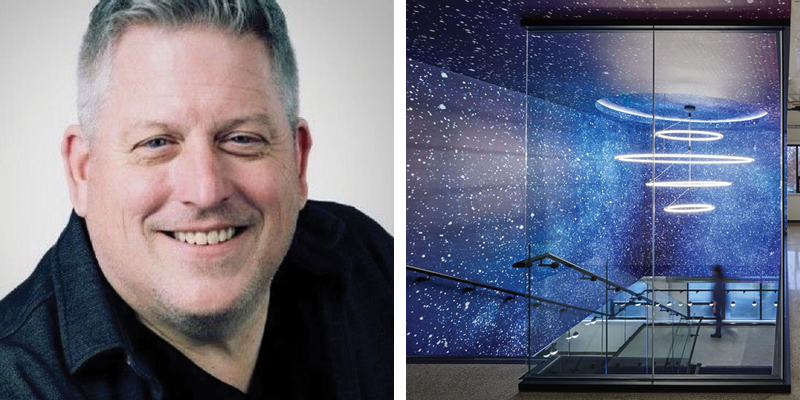
TRENDS:
I am seeing a trend of what I like to call “The Big Mash-Up.” Post-COVID, there will no longer be a separation between commercial, workplace, retail, hospitality, healthcare, manufacturing, etc. With this idea, buildings are becoming multi-faceted facilities that are used for working, shopping, dining, fitness/wellness, and much more. This has brought a new meaning to amenities and we should be looking at developments as “integrated-use” projects. This means that the design and layout of the building will change over time, so ultimate flexibility is the key.
CHALLENGES:
It is more important than ever that an environment celebrates brand. We are seeing opportunities with landlords, REITs, and developers to approach their office buildings as their own brands, especially when they are repositioned, reconfigured, and re-tenanted. Preparing a brand strategy for a building or asset plays directly into the marketing, leasing, and valuations of the building. It also brings in all of our areas of expertise including Strategy & Insights, Brand Positioning, EGD, Interior Design, Architecture, etc.
WHAT’S NEW FROM NELSON:
For one of our latest west coast projects, our design team was challenged with transforming an office and manufacturing space into a dynamic workplace that transports employees to a vibrant and inspiring destination, always being reminded of the company’s mission. Located in Seattle, this two-story, 71,000-square-foot facility features equal parts office and manufacturing space, complete with a café and social lounge, and a variety of meeting spaces.
With a focus on innovation and customer-centric design, Tom Bowen fuels growth in the technology, life sciences, mixed-use, commercial and retail sectors. With 20 years of experience in the industry, his experience includes working with complex and scalable account management, organizational development, team building, and business unit performance.
Curious to learn about what’s going on in other regions?
Stay tuned for more Regional Roundups
An Inside Look at EuroShop’s Retail Design Showcase
What does the future of retail design look like? What does the store of the future look like? At the Shop Fitting and Store Design exhibits at EuroShop 2020 our teammates explored the fair’s oasis of all things design checking out the latest and greatest design solutions of today. Along the way, we were inspired and enlightened by a sea of temporary design and modular concepts brought to the Dusseldorf by talented designers, architects, and creatives from around the world.
Here are a few solutions we saw time after time and that have become trends we’re seeing in stores everywhere:
Flex Systems
Consumers of today are always looking to see something new. With this in place, retailers are looking for design solutions that offer flexibility so that in-store merchandise and services can easily be adapted and fitted to the next big thing consumers are looking for. At EuroShop 2020 we saw lots of easy-to-move seating systems, peg walls that are easily interchangeable, and mobile architecture systems.
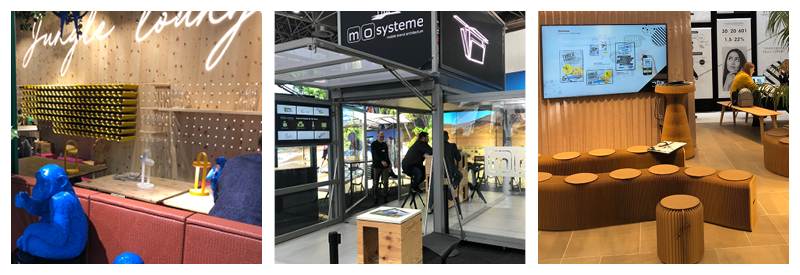
Retail Goes Green
As we explored in our most recent sustainability report, the design industry is largely promoting biophilic design. Bringing natural moments to life through green design elements such as living walls and plant-like elements was widely seen at EuroShop 2020. We predict greenery will only continue to show up in retail design as sustainability and the focus on wellness continues to grow.
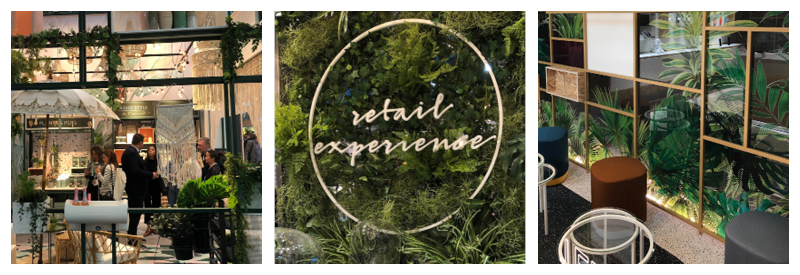
Personalized Lighting
Light does more than just illuminate space as made clear at this year’s fair. Hundreds of lighting vendors showcased the endless ways that lighting can be personalized to not only optimize a space but speak to brand. From custom modular systems to branded neon signs, retailers are using light in more personalized and unique ways than ever before.
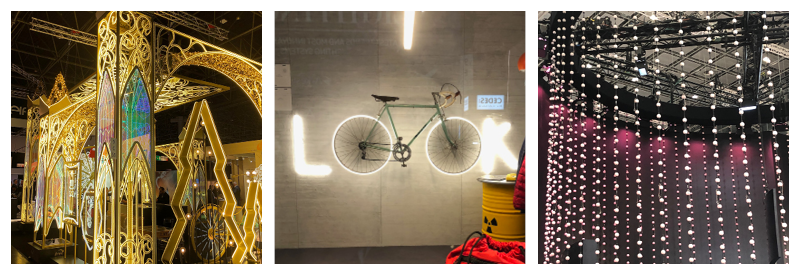
Phygital Galore
In a technology charged society, it has become apparent that digital design elements are here to stay. At EuroShop 2020, digital creators from all over the world shared digital solutions that create bold visual moments or improve store efficiency. Some of the most popular digital elements seen at EuroShop 2020 included digital price and art displays to AI-powered dressing rooms. As mentioned before, digital isn’t going anywhere BUT we do predict a shift in its purpose on the horizon.
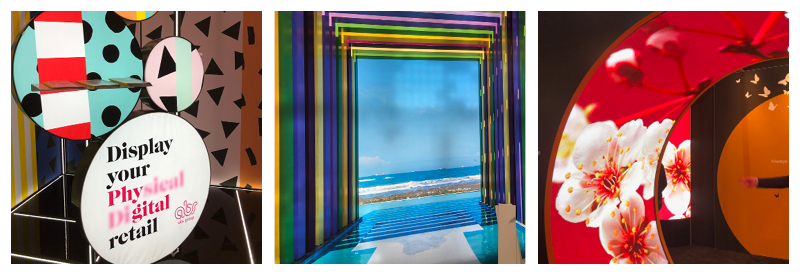

Micro-Experiences
As we discussed at NRF 2020 this January, the trend of Micro-Experiences made an appearance at EuroShop 2020 a month later. As we shift to an experience-based economy, consumers are looking for new ways to interact with consumers pushing architects and designers to create in-store experiences that offer new moments of connection offered by brand products and services.
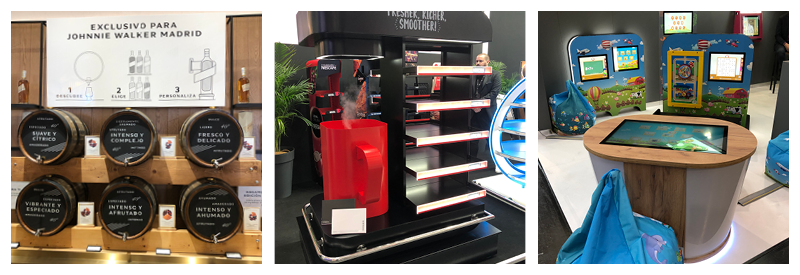
Curious to see what else we explored while at EuroShop 2020? Click here for key takeaways and more coverage!
Leveraging Technology to Attract and Retain
Advancements in technology have been improving workplace productivity for years, allowing us to work virtually from anywhere. Now that a global pandemic is forcing us to work from home, the question being posed seems to be, why return to the office at all? According our “Evolving Workforce Expectations” study, only 7% of employees want to return to work a full five days a week. If employees are a company’s most valuable asset, employers must make the workplace a sought-after destination for everyone, one that people are excited to return to.
Brands will need to reevaluate their office portfolio and determine a plan to ensure their employees can take advantage of new technologies that make communicating, collaborating, and connecting, more seamless than ever before.
But while technology continues to rapidly evolve to better bridge the gap between physical and virtual workers, the most critical element for successful adoption and activation of these tools will be a robust change management strategy. Employers must provide holistic awareness, training, and buy-in to effectively activate these new, digitally focused offerings.
Here are the four ways technology can be used to make the workplace a sought-after destination:
Instant communication
Brands are having to communicate with their employees more than ever before, and because so many things are constantly evolving, the need for immediate communication is imperative.
Integrated workplace management systems like iOffice and their employee experience app Hummingbird, previously considered luxuries, will be necessities. With technology like this, employees can reserve workstations or conference rooms, submit service requests, be alerted to incoming mail, visitors, and more, all from their own mobile devices. Employers can also keep a close eye on who is in and out of their facility each day, constantly monitoring capacity to keep their employees safe.
As wearable technology gains more popularity, many employers are realizing these tools offer a unique opportunity to communicate with employees. With the traditional, in-office nine to five likely becoming extinct, a singular means of communication like email won’t be enough. And with employees working from a variety of environments including coffee shops, home offices, hotel lounges, and even their cars, wearable technology is something they’ll always have access to.
As the mobile workforce and risks of cyber security attacks continue to increase, innovative solutions like Samsung Knox are changing the way companies use wearables, embedding their software within workers’ mobile devices and smartwatches to secure company data, and help mitigate breaches of private company information.
Real-time collaboration
Collaboration tools will only gain more popularity during and after the pandemic. From video conferencing, to file sharing, there are numerous tools that will make the hybrid work day more seamless. It is no longer just about meeting virtually anymore, it is about going a step further to integrate with multiple platforms, support blended teams, provide robust collaboration opportunities, and the ability to accommodate smaller, breakout groups virtually.
Even before the pandemic tech giants like Microsoft were perfecting their cloud-based collaboration tools, but the social distancing, work-from-home mandates are accelerating this trend. These brands have taken a close look at how consumers have had to change their behaviors drastically in a short period of time and made improvements to their tools to make the digital experience as close as possible to the real-time experience.
Today, digital meeting facilitators can set up automated emails connected to their meetings, making it easier to manage attendance. They can also view a dashboard after to get a big picture report of attendee engagement. Video webinars can be recorded and later shared with the group along with a full transcript, file attachments, and any discussions from the chat window of a video or call. From custom backdrops, and screen sharing, to virtual chalkboards and collaborative documents, there isn’t much you can’t do remote anymore, making tools like these imperative when returning to the physical office.
Other tools such as Slack and Microsoft Teams reduce the amount of emails needed in a work day, by offering one, cohesive platform for teams to communicate. Mural is another online tool for ideation sessions, providing a more visual-based platform to facilitate blue-sky thinking.
Connection without distraction
Video conferencing technologies like Zoom are here to stay. Especially since many white-collar corporations are extending the work-from-home period until as late as next summer. This means many workers will need a hybrid environment to connect with clients, colleagues, and business partners. Many will still want their own desk space to retreat to for heads down work, but the popular open concept environments aren’t conducive for lengthy zoom meetings or other new-age virtual tasks.
Rethinking conference rooms of all sizes is one way to accommodate these new hybrid environments. Because guests, clients, and other visitors from outside of an organization are less likely to go into an office that isn’t theirs, large conference rooms, both within the tenant space, and the shared building, sit empty and unused.
These underutilized meeting rooms can be transformed to a few different types of meeting areas:
- Production Pod – For one-on-one video conferencing meetings, a place where employees can go to chat with their colleague who may be working from home, or their client who may not be comfortable coming into the office. Although there isn’t much square footage needed, the room must be sound proof, and equipped with all the AV technology needed to perform a seamless video call, including a large monitor with easy connection to a laptop, a power source, and good lighting for video visibility.
- Collaboration Suite – A little bigger and can accommodate a larger group. This room comes with everything the smaller production pod includes, but with an even bigger monitor with an auto-framing video camera to track and focus on who in the room is speaking and stacked theater seating for visibility. Creating a physical destination that puts blended teams on equal footing.
- Presentation Studio – A production room equipped with podcast equipment, a green screen, advanced sound and recording tools, will be beneficial for employees creating more elevated, digital content that will continue to remain the norm, years after the pandemic.
Essential safety
Revolutionary technologies are improving quality of life for millions of Americans living through this global pandemic. Telehealth services are increasing in popularity due to COVID-19, offering a safe way for patients to stay out of overwhelmed healthcare systems and prevent the risk of exposure. Smartphone and wearable technology tracking has even been used to trace contact of those infected with the virus.
When employees return to work, these types of technologies can make a huge difference. Employers and landlords can start small with zero-touch adjustments like automated doors and motion sensor lighting. Steelcase’s RoomWizard is a completely hands-free solution for meeting room reservations. Employees simply walk into an available room and begin working and the smart technology marks the room in-use.
Larger investments include innovative technologies such as body temperature walk-through kiosks, germicidal UV light, and more. Investing in technologies that make employees feel safe can go a long way and hold significant value.
In the end, the key to success when returning to work will be change management. Think about how quickly we’ve all adjusted to day-to-day routines like working from home, going to the grocery store, and dining out at restaurants. Wearing masks, temperature checks, and social distancing were once foreign behaviors none of us ever had to practice, a few short months later, it seems normal. Managing expectations and offering the tools and environment needed to communicate, connect, collaborate, and stay safe will set employees up for success and get them excited to return to the new workplace destination.
Fashion Meets Design at PORTALS Boston 2019
This November, NELSON Worldwide teammates in Boston participated in IIDA New England’s PORTALS Fashion Show—an annual fashion-filled night that challenges creative minds to create high fashion garments using everyday interior design and building materials. This year’s “fictional portals” themed event benefited YouthBuild Boston, a program that supports young people in gaining credentials needed to successfully enter the building trades.
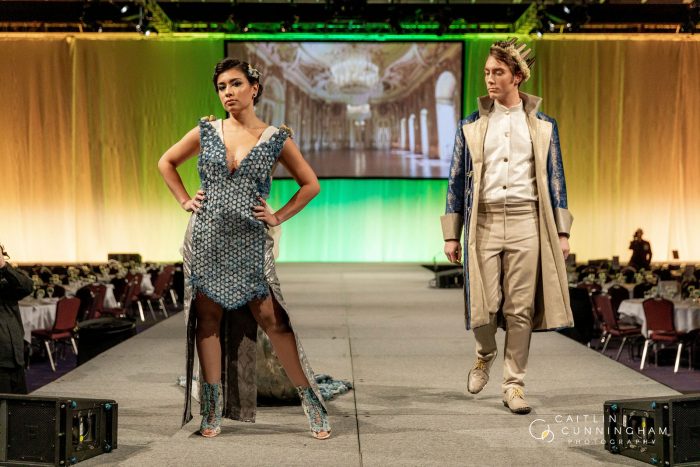
Honoring this year’s theme, NELSON created a “Cinderella’s Castle” look and show. Before the design process began, the runway team did research on the old tale and Castle itself. As interior designers, it was easy to be inspired by the castle’s elegant, old era components such as it’s wallpaper and tapestry patterns, mosaic tiles, and juxtaposition of hard versus soft materials. Focusing on taking these elements and giving them a modern twist, the team created two outfits to show off on the runway; one for Cindy (a modern Cinderella), and one for Prince Charming.
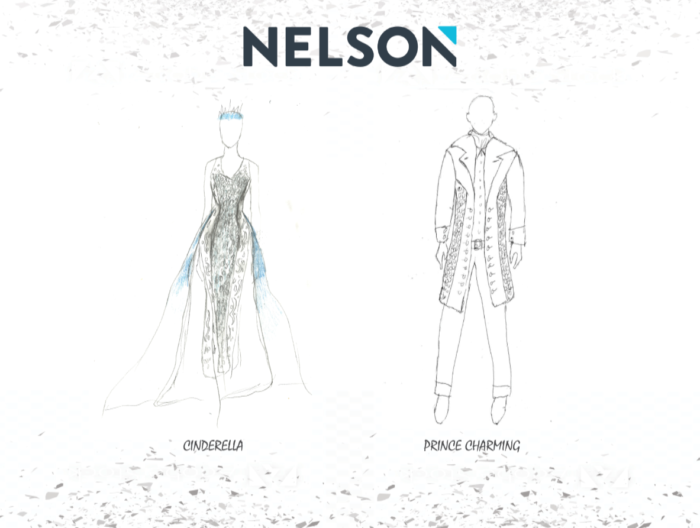
After drawing inspiration and sketching the final designs, the team worked with various vendors to gather materials. Architex supplied upholstery and wallcovering, StoneSource supplied tiles and backing, and Scandinavian Spaces through Designed + Delivered supplied moss to give the outfit a more whimsical feel. After pinpointing the right materials, the team started construction and massaged the productions based on how the materials were working during construction.
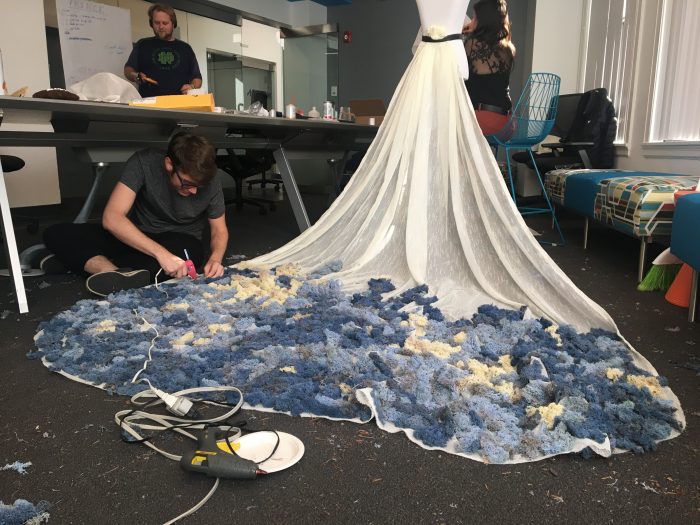
After countless sewing and fitting sessions, the outfits were complete. As a result, two beautiful looks were created (and each outfit weighing over an impressive 15 pounds!). The Cindy outfit even featured a modern-day version of Cinderella’s slipper—a totally wearable heeled shoe covered in broken glass tiles.
At the event, the runway team had an amazing time showing off their hard work. From research to envisioning, construction and the runway, NELSON is proud of the Boston teammates for taking their creativity outside of the office in support of the community. We look forward to next year’s show!
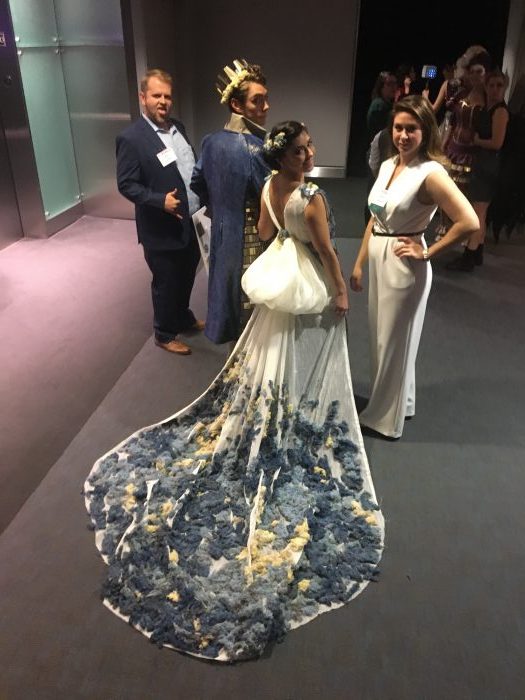
SPECIAL THANKS GO TO EVERYONE INVOLVED WITH THIS SPECIAL NIGHT!
Models:
Yolanda Sheehan
Mike Lynch
Make-up:
Nicole Done-Pimental
Hair:
Katrina Eliadis
Shoes:
Brian Duffley
Sketch:
Yolanda Sheehan
Construction Contributions:
Dan O’Shea
Yolanda Sheehan
Oriana Merlo
Mike Lynch
Christina Gedick
Paul Koch
Lisa Nisbet
Leon Medical Centers
Insurance Provider Technology Center
Careers
Retail Revised: Adopting New Servicescapes
In-store retail is back, but with its return, there is no doubt that the way we shop, or want to shop, has changed forever. With the growth of e-commerce and the adoption of new shopping habits, retailers must act fast to create modern, in-store experiences that complement their digital presence while differentiating their offering from the saturated retail market.
Whether it’s online or in-store, revised retail strategies are crucial for brands as consumer behavior evolves. The stores of tomorrow must serve a purpose beyond that of the pure sales opportunity and transform into a destination where service, convenience, and discovery take place. In our latest ‘Retail Revised’ series we’ll be discussing key themes retailers must consider to enhance their in-store experience. This week we are exploring concepts and ideas that can enhance a brand’s service offering:
Across the retail landscape, new technology has lead the role of the physical store to shift from a static home for merchandise to a hybrid fulfillment center where shoppers can trial, order, or return items. As a result, shoppers are hungry for transparency when it comes to knowing how, when, and where to get a product as fast as possible.
Now, retailers should focus on providing tools to both shoppers and employees that provide accurate inventory tracking, seamless returns, and in-depth product information. From in-store touchpoints to handheld apps, here are a few brands that are providing enhanced services:
Walmart Apps
Walmart’s new store app allows customers to easily locate where products are and what’s in stock. After creating a shopping list, consumers open the app while in-store and receive maps that route to the exact locations of their chosen products. Given Walmart’s 180,000 sq. ft format, the app creates a seamless shopping experience that offers quick and easy navigation.
The brand has also introduced the new employee-facing app, Me@Walmart that answers sales assistants’ product and availability queries in-store.
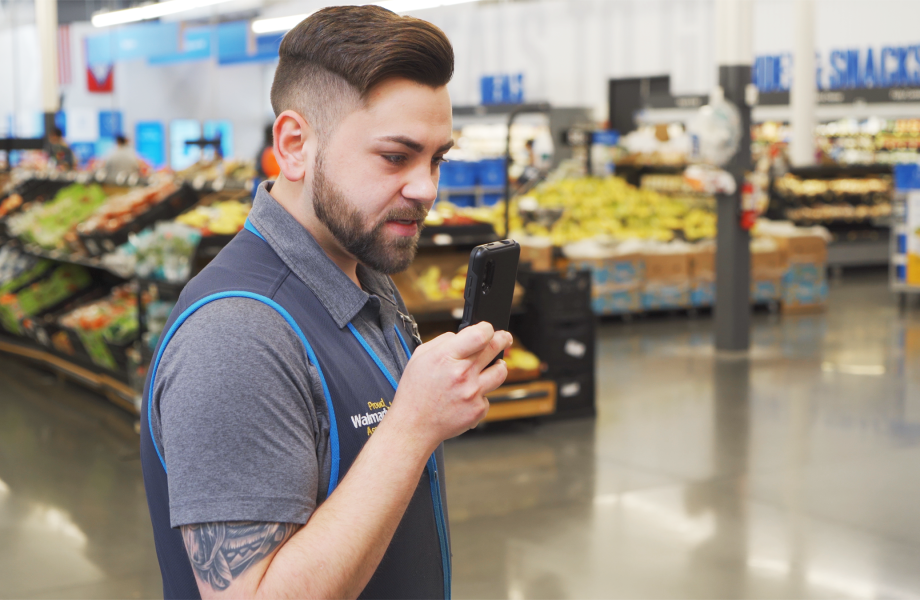
Photo: Walmart
Bloomies by Bloomingdales
Bloomingdales latest store concept, Bloomies, created in partnership with NELSON will focus on delivering superior customer experience focused on rotating trends and a curated product collection. The small-format store will offer stylists in departments to provide personalized service to customers. Each of the stylists will be equipped with digital selling tools that will enable them to find the right items for their customers, whether located near or far.
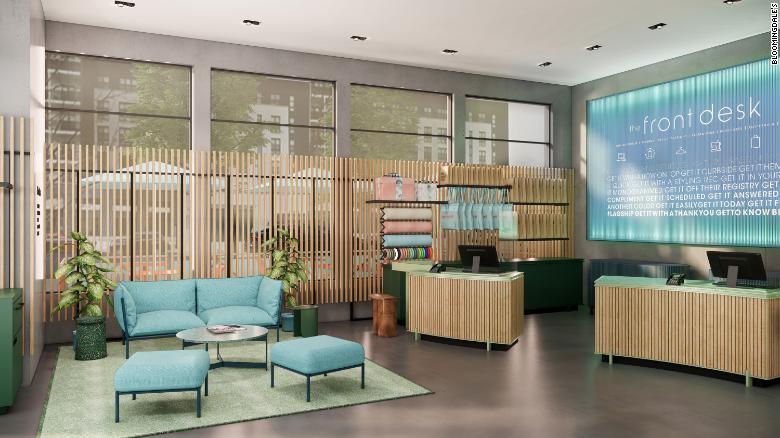
Photo: Bloomingdales
La Nouvelle Cave
Retailers are focused on acquiring resources that provide effortless and innovative experiences for both shoppers and employees.
La Nouvelle is a liquor store in Paris with a virtual sommelier. Shoppers scan a QR code with their mobile device or use in-store tablets to access advice/recommendations based on their preference. Once shoppers chose what they want, a unique color and lighting system guiding them towards the right bottle in-store.
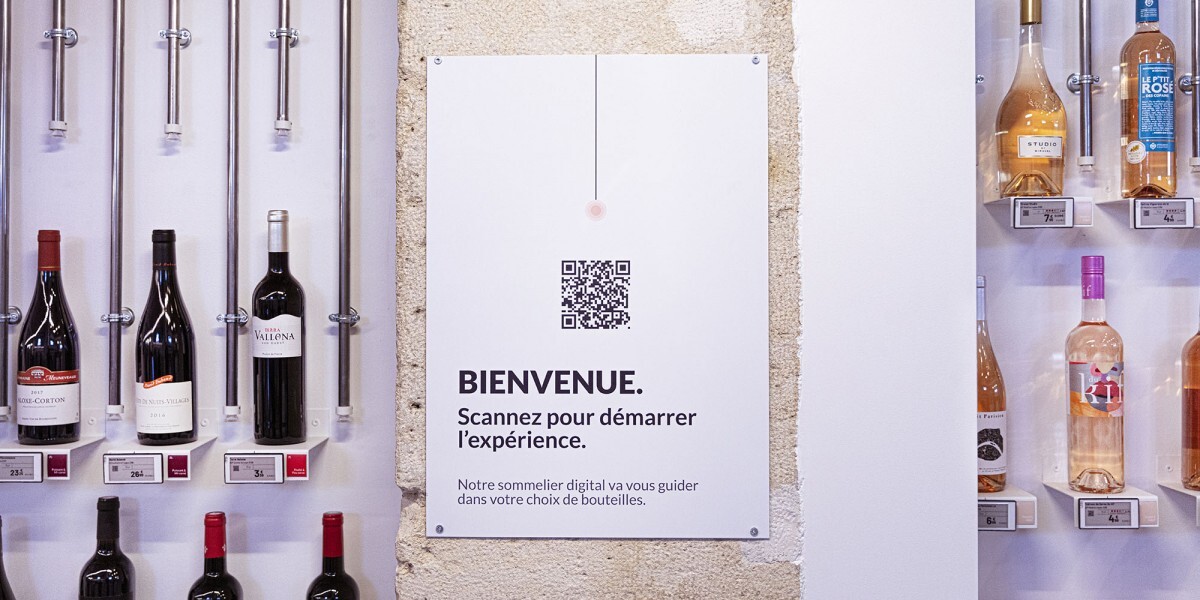
Photo: La Nouvelle Cave
It will be crucial for retail brands to create opportunities to better connect with their consumers – whether digital or in-store – these offerings must provide a seamless, customized experience to put shoppers on a pedestal and keep them coming back for more.
IRDC 2018 Recap
Did you miss this year’s International Retail Design Conference? You’re in luck … our team of FRCH-attendees are here to share highlights, takeaways, and recommendations from this year’s conference.
Presented annually by VMSD, the conference includes three days of design dialogue centered around best practices, evolving trends, and fresh strategies for engaging shoppers and maximizing resources. More than just presentations, the conference allows attendees to get up-close and personal with a new city each year that is leading the way in retail innovation – this year’s pick? Seattle.
Our team not only presented at the conference (click to view and download our presentation “Tapping Into the Senses to Strike an Emotional Chord”) but also heard a lot of food for thought including these
5 key takeaways for retailers:
- Don’t Forget the Fantasy. In this age of Amazon, it’s easy to forget the whimsy – but at the end of the day it’s shopping – it’s entertainment. Bring back the romance that retail once had, whether it’s in a store window or a fitting room, create adrenaline and emotion through design.
- Flexible Programming. Consumption of experience has outpaced consumption of goods by a factor of 3. With that in mind, successful environments are those that create communities among their guests. Create adaptable, functional design that will get your guests to say hello sooner.
- Connectivity Is King. The smartest person in the room is the one closest to the customer. Leverage your boots on the ground, instead of making all decisions in a corporate silo, to create true brand ambassadors. And don’t assume what customers know, want, or experience – instead ask them.
- Digital Literacy. No longer about online vs offline, today it’s simply about shopping. Retail brands need to focus on creating brand affinity versus brand engagement in order to create stronger brand advocates. Utilizing the 4 C’s: Connections, Content, Conversion, and Community to build loyal followers.
- Welcome to the Algorithmic Age. Soon everything will be curated for you (if it’s not already). A key consideration will be how retail brands can better anticipate their consumer’s intentions without them having to tell us.
Retail Tour
Few cities have been a testing ground for as many retailers that have expanded nationally or internationally than Seattle. Home to Nordstrom, Starbucks, REI, and Amazon to name a few. It made a perfect backdrop for this year’s IRDC and we made sure to get in our steps while taking in some highlights.
Check out our “must-see” Seattle tour, a curated list of some our favorite experiences in retail, restaurant, hospitality and more. From new brand concepts like Amazon Go, to independent boutiques like Glasswing, a clothing and home-goods shop that contains a shared design office and common gallery space available for rent (and has a great Seattle-focused blog). **Bonus Stop: if you find yourself farther south in Columbia City, also make sure to check out Eileen Fisher Renew (recently highlighted on Creative Fuel).
Below are a few of our favorite hot spots along the way … take a look and enjoy!
Amazon Go
Now with 3 Seattle locations (and 2 in Chicago with another one on the way), the online giant is showing it can be effective in brick-and-mortar as well. Our team visited the store on 7th avenue, and other than having to download the app prior to entering the store, we were impressed by how seamless the experience was. The 1,800-square foot market carried a curated list of items that ranged from grocery staples to more gourmet offerings that you might find at a Trader Joe’s. One offering we found particularly convenient was their Amazon Meal Kits – 4 pre-selected meals for two people that could be ready in 30 minutes. With the rise of subscription based meal-kits, its a timely solution that allows consumers the same ease, without the subscription commitment.
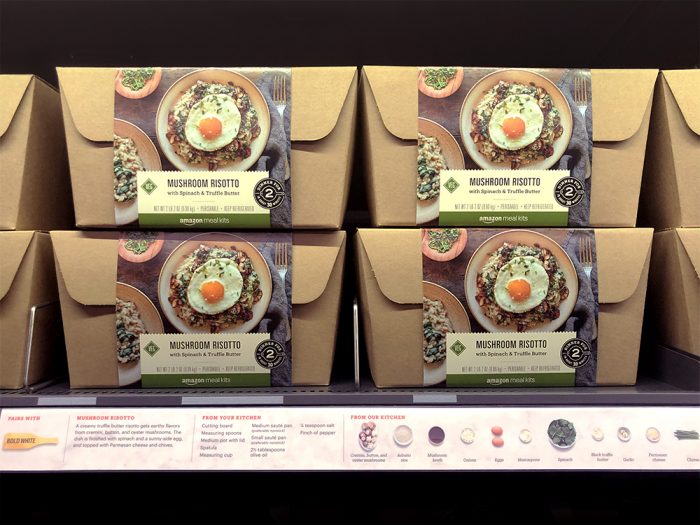
Totokaelo
Described as the “purveyor of beautifully designed and thoughtfully curated fashion and objects” Totokaelo, located in Seattle’s hip Capitol Hill neighborhood, is 7,000 sf of curated, high-end collections. The bi-level store features a gleaming white interior complete with skylight and plenty of natural light, making for a bright and inviting entrance.
The overall space is simple in form but but big on impact, allowing the fashion to become the art object in this gallery-like environment. The stark white interior is balanced by wood and other natural materials – leather, macrame and woven rugs are used to warm the space but not take away from the product. Understated details like curved display walls, artistic pendant lights, and exposed beams elevate the store in a very sophisticated manner.
This luxury offering is a nice contrast to the more casual, grunge vibe of the surrounding neighborhood. While the store offers luxury labels like Dries Van Noten and Comme des Garçons, the collection is also very in-tune with the Seattle style and environment, offering lots of functional, utilitarian styles for both men and women.
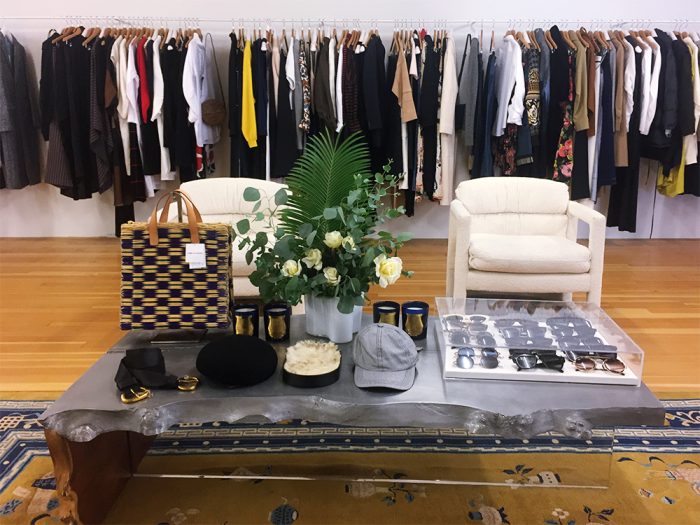
Princi
This summer Starbucks opened it’s first standalone Princi bakery at 2118 Westlake Avenue. The high-end Italian bakery concept features fresh pastries, bread, and focaccia pizza, among other treats – in addition to Starbucks coffee and a bar area severing cocktails, beer, and wine. Starbucks recruited Milanese baker Rocco Princi’s namesake company in 2016 for its high-end Starbucks Reserve Roasteries (see below) and the brand is now making a push to open Princi bakeries across the country. Our team sampled the goods and were not disappointed. The environment was warm and inviting, including an outdoor fire pit and a clear view into the kitchen to see the bakers at work.
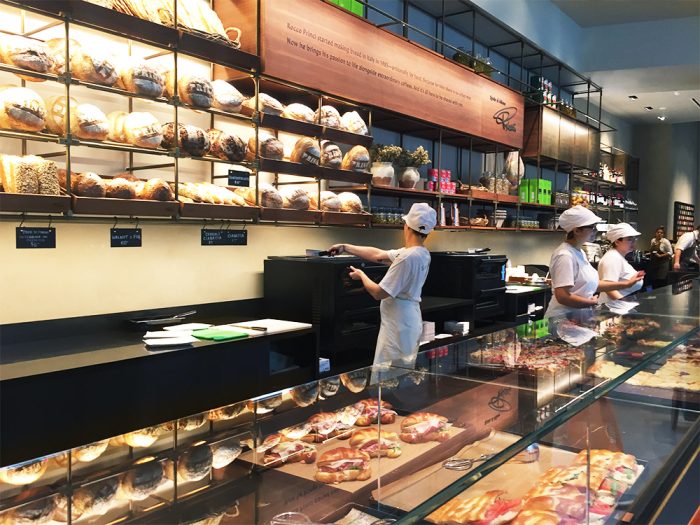
Sitka and Spruce
Our team enjoyed a great dinner with great friends at Sitka and Spruce during the conference. Located in Capitol Hill’s Melrose Market, the quirky charm of this restaurant is undeniable. The space is framed by old, oversized auto shop windows with a brick, wood-burning oven in plain sight anchoring the open kitchen. Lucky enough to reserve the coveted communal table, nothing sat between us and the butcher block table of the kitchen. The rustic environment and farmhouse dining room created an intimate space to enjoy shareable bites of authentic Pacific Northwest cuisine.
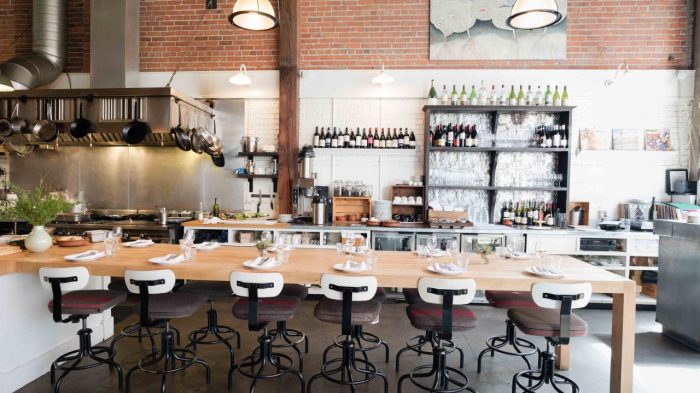
Starbucks Reserve Roastery
No trip to Seattle is complete without stopping at the Starbucks Reserve. This dramatic expression of the coffee giant was launched in 2014 and celebrates the true craft experience, from unroasted beans to the coffee steaming in your cup. Located just nine blocks from the original Starbucks Pike Place store, the experience is not only for coffee-drinkers, but instead boasts a full bakery, deli, and bar – in addition to accessories and Starbucks products.

Tuft & Needle
Mattress e-tailer turned brick-and-mortar brand, Tuft & Needle recently opened one of their four physical stores in downtown Seattle. The Amazon darling already gets 25% of sales through the online giant, but knew in order to disrupt the mattress industry, they would need to expand their footprint. The founders created a “Hate List” (the original posted in-stores) of things that wanted to change about the traditional mattress-buying experience and it has been a driving motivator in their guiding mission to “change the mattress industry by taking care of people.”
